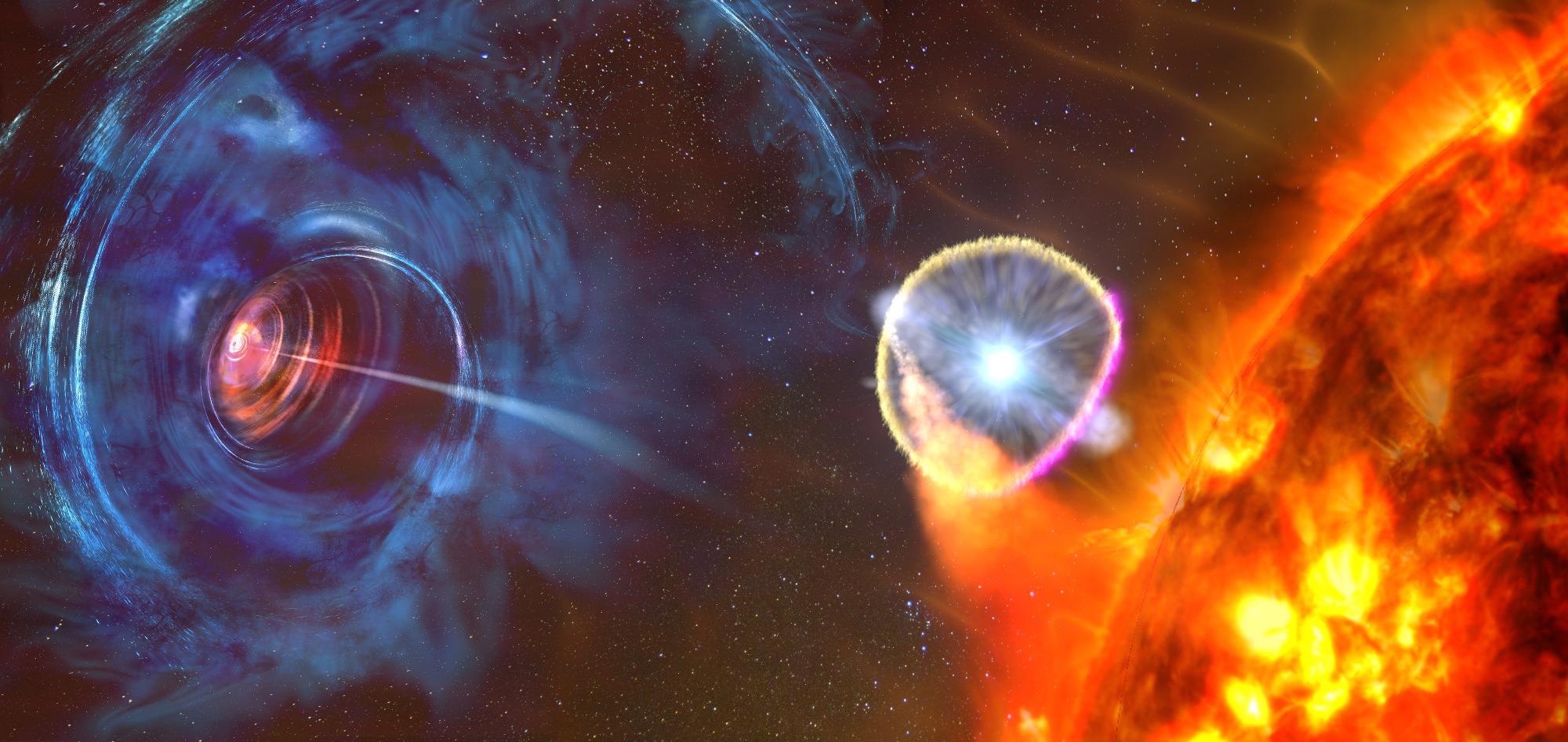An experiment that aims to accurately measure the charge-to-mass ratios of protons and antiprotons, lead by the RIKEN-led BASE partnership at CERN, Geneva, Switzerland, has discovered that, within the ambiguity of the experiment, matter and antimatter react to gravity in the same manner.

Image Credit: Shutterstock.com/ Elena11
Matter and antimatter form some of the most fascinating problems in present-day physics. They are fundamentally equivalent; except in the case where a particle contains a positive charge its antiparticle contains a negative one. In all other aspects, they appear equivalent.
However, one of the big mysteries of present-day physics, called “baryon asymmetry,” is that regardless of the fact that they appear equivalent; the universe seems to be composed completely of matter, with very little antimatter. As expected, researchers worldwide are attempting to discover something different between the two, which could clarify why humans exist.
As part of this hunt, researchers have analyzed whether matter and antimatter interact in the same way with gravity, or whether antimatter would endure gravity in a different way than matter, which would disrupt Einstein’s weak equivalence principle.
Currently, the BASE collaboration has demonstrated, within firm boundaries, that antimatter does actually respond to gravity in the same manner as matter.
The finding, reported in the journal Nature, was derived from a different experiment, which was probing the charge-to-mass ratios of protons and antiprotons, one of the other crucial measurements that could establish the main difference between the two.
This study required 18 months of work at CERN’s antimatter factory. To perform the measurements, the team confined antiprotons and negatively charged hydrogen ions, which they used as a substitute for protons, in a Penning trap.
In this device, a particle trails a cyclical trajectory with a frequency, close to the cyclotron frequency, that scales with the magnetic field strength of the trap and the charge-to-mass ratio of the particle.
By confining antiprotons and negatively charged hydrogen ions into the trap, one at a time, they could measure, under identical circumstances, the cyclotron frequencies of the two-particle types, equating their charge-to-mass ratios.
By doing this, we were able to obtain a result that they are essentially equivalent, to a degree four times more precise than previous measures. To this level of CPT invariance, causality and locality hold in the relativistic quantum field theories of the Standard Model.
Stefan Ulmer, Project Lead, CERN
Remarkably, the team used the measurements to explore a fundamental physics law called the weak equivalence principle. According to this principle, various bodies in the same gravitational field should experience the same acceleration when frictional forces are absent.
Since the BASE experiment was positioned on the surface of the Earth, the proton and antiproton cyclotron-frequency measurements were conducted in the gravitational field on the Earth’s surface, and any variance between the gravitational interaction of protons and antiprotons would cause a variance between the cyclotron frequencies.
As the planet orbited the Sun, the researchers sampled the gravitational field of the Earth and discovered that matter and antimatter reacted to gravity in the same manner up to a degree of three parts in 100, which conveys that the gravitational acceleration of matter and antimatter are indistinguishable within 97% of the experienced acceleration.
Ulmer states that these measurements could pave the way to new physics.
The 3% accuracy of the gravitational interaction obtained in this study is comparable to the accuracy goal of the gravitational interaction between antimatter and matter that other research groups plan to measure using free-falling anti-hydrogen atoms. If the results of our study differ from those of the other groups, it could lead to the dawn of a completely new physics.
Stefan Ulmer, Project Lead, CERN
The research group, directed by RIKEN, included scientists from international partners including the Max Planck Society, CERN, the Universities of Mainz and Hannover, the University of Tokyo, the National Metrology Institute in Germany PTB, and GSI Darmstadt.
Journal Reference:
Borchert, M. J., et al. (2022) A 16-parts-per-trillion measurement of the antiproton-to-proton charge–mass ratio. Nature. doi.org/10.1038/s41586-021-04203-w.